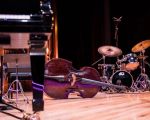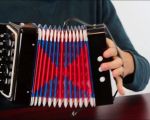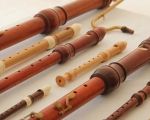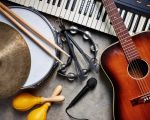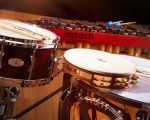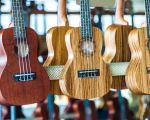How to Choose the Best Music Accessories for Recording: A Comprehensive Guide
May 06, 2025
How to Choose the Best Music Accessories for Recording: A Comprehensive Guide
1. The Importance of Choosing the Right Music Accessories for Recording
When I first started recording music, I found myself overwhelmed by the sheer number of options available for accessories and gear. Whether you're a beginner or a seasoned professional, the right music accessories are crucial to creating high-quality recordings that meet your creative vision. From microphones to headphones and audio interfaces, every piece of gear plays a pivotal role in how your music sounds.
The challenge, however, is knowing how to choose the best accessories for your specific needs. A musician’s setup can vary greatly depending on their genre, the environment in which they record, and their technical skill level. Over the years, I’ve learned that choosing the right recording accessories doesn’t always mean going for the most expensive or the trendiest items—it’s about finding gear that works well together and suits the style of music you’re creating.
In this guide, I’ll walk you through some essential music accessories for recording, explain their importance, and provide tips on how to choose the best ones based on your recording setup and needs.
2. Choosing the Right Microphone for Recording
One of the first decisions you’ll make when building your recording setup is which microphone to use. The microphone is arguably the most important accessory in any recording setup, as it’s responsible for capturing sound accurately. Different microphones serve different purposes, so understanding the various types is crucial.
- Dynamic Microphones: These are ideal for loud sound sources like guitar amps and drums. They’re durable, affordable, and often used for live performances. If you’re recording electric guitar or vocals with a powerful voice, dynamic microphones such as the Shure SM58 or SM7B are excellent choices.
- Condenser Microphones: These are more sensitive and capture a wider range of frequencies, making them perfect for studio recordings, particularly for vocals and acoustic instruments. Condenser mics are more delicate, but models like the Audio-Technica AT2020 or the Neumann TLM 103 offer excellent sound quality for detailed recordings.
- Ribbon Microphones: Although less common, ribbon mics are favored for their vintage sound and are often used for capturing smooth, natural tones. These are great for delicate instruments like strings or for achieving a classic, warm sound.
The key to choosing the right microphone is determining the type of sound you want to capture and understanding the acoustics of your recording environment. A good microphone will serve as the foundation for all of your recordings.
3. The Essential Role of Audio Interfaces in Recording
An audio interface is the bridge between your instruments, microphones, and the computer or digital audio workstation (DAW) where you record. While it might seem like a simple piece of equipment, the audio interface plays a crucial role in ensuring high-quality sound capture and playback.
- USB Audio Interfaces: These are popular because they’re affordable, easy to use, and work well for home studio setups. Brands like Focusrite, PreSonus, and Behringer offer USB interfaces that provide excellent sound quality without breaking the bank.
- Thunderbolt and PCI Audio Interfaces: For more professional setups, especially in larger studios, these interfaces offer higher bandwidth, lower latency, and more input/output options. They tend to be more expensive but are worth the investment if you plan to record with multiple channels simultaneously or require professional-level performance.
When selecting an audio interface, consider how many inputs you’ll need for your instruments or microphones. Think about whether you want additional features, such as built-in preamps for microphones or built-in effects, which can simplify the recording process.
4. Selecting Headphones for Accurate Monitoring
Headphones are another essential accessory for recording, as they allow you to listen to your recordings without interference from room noise. While any pair of headphones might suffice for casual listening, studio-quality headphones are necessary to monitor your recordings accurately.
- Closed-back Headphones: These are perfect for recording, as they help isolate the sound, preventing any leakage into your microphone while you’re tracking. Popular models like the Audio-Technica ATH-M50x or the Sony MDR-7506 are excellent for monitoring during recording sessions.
- Open-back Headphones: While these provide a more natural, open sound for mixing and mastering, they’re not ideal for recording as they let sound escape. However, they can be useful for post-production tasks like editing and mixing.
Choose headphones that offer a flat response and are comfortable enough for long sessions. It’s also important to consider impedance—higher impedance headphones tend to have a better sound quality, but they require a more powerful headphone amp to drive them properly.
5. Acoustic Treatment: Creating the Ideal Recording Environment
One aspect of recording that often gets overlooked is the importance of acoustic treatment in your recording space. The environment in which you record can have a huge impact on the quality of your recordings. Room noise, echoes, and reflections can distort the sound, making it difficult to capture clear, professional-quality audio.
- Bass Traps: These are essential for controlling low-frequency sound waves that often build up in corners of the room. Bass traps help to reduce muddiness and provide clearer recordings.
- Acoustic Panels: These panels absorb sound and prevent it from bouncing off walls, which can cause unwanted reflections. Placing acoustic panels strategically on the walls and ceiling of your recording space will help achieve more accurate sound capture.
- Diffusers: These are used to scatter sound waves, ensuring that the room sounds balanced and natural, without any unwanted buildup of sound.
If you’re working from home or setting up a small studio, investing in a few key pieces of acoustic treatment can drastically improve your recordings. Even something as simple as foam panels can make a noticeable difference.
6. Choosing the Right Cables and Stands
While cables and stands might seem like minor accessories, they’re integral to setting up a reliable and professional recording space. High-quality cables are essential to ensure that your signals are clean and free of noise or interference.
- Microphone Cables: Look for high-quality XLR cables that are durable and shielded against electromagnetic interference (EMI). A cheap cable can introduce noise into your recordings, which is something you want to avoid at all costs.
- Instrument Cables: For electric guitars, keyboards, or other instruments, use high-quality instrument cables to ensure that your sound remains intact as it travels through your system.
- Stands and Mounts: Proper stands are crucial for keeping your microphone in place and maintaining its ideal position during recording. Consider investing in a boom arm for your microphone, which allows for greater flexibility and comfort while recording vocals.
7. Additional Accessories to Enhance Your Recording Setup
While microphones, interfaces, and headphones are essential, there are a few additional accessories that can elevate your recording experience:
- Pop Filters: These help reduce plosive sounds (like "P" and "B" sounds) when recording vocals. They are particularly useful for maintaining clarity and avoiding distortion.
- MIDI Controllers: If you’re working with virtual instruments or electronic music, a MIDI controller is a must-have. It allows you to input musical data into your DAW, making it easier to create music with virtual instruments.
- External Hard Drives: Recording music creates a lot of data. An external hard drive is crucial for backing up your files and ensuring you don’t run out of storage space during a recording session.
Investing in these small accessories can make a big difference in both the functionality and the quality of your recordings.
8. Conclusion: Finding the Best Music Accessories for Your Recording Setup
Selecting the right music accessories for recording can feel like a daunting task, but with the right knowledge, you can make choices that enhance your creative process. Understanding the role each piece of equipment plays in your setup and how it affects the overall sound quality is crucial to making informed decisions. From microphones to acoustic treatment, each accessory contributes to the final product.
The key is to prioritize what’s most important for your specific needs, whether that’s a high-quality microphone for crisp vocals or an audio interface that ensures low latency and clear audio. Building the right recording setup for your music will not only improve the quality of your work but also inspire your creativity.
For expert advice and top-notch gear recommendations, visit Beat Trigger for all your music recording accessory needs. We’re here to help you create the best recording experience possible!

